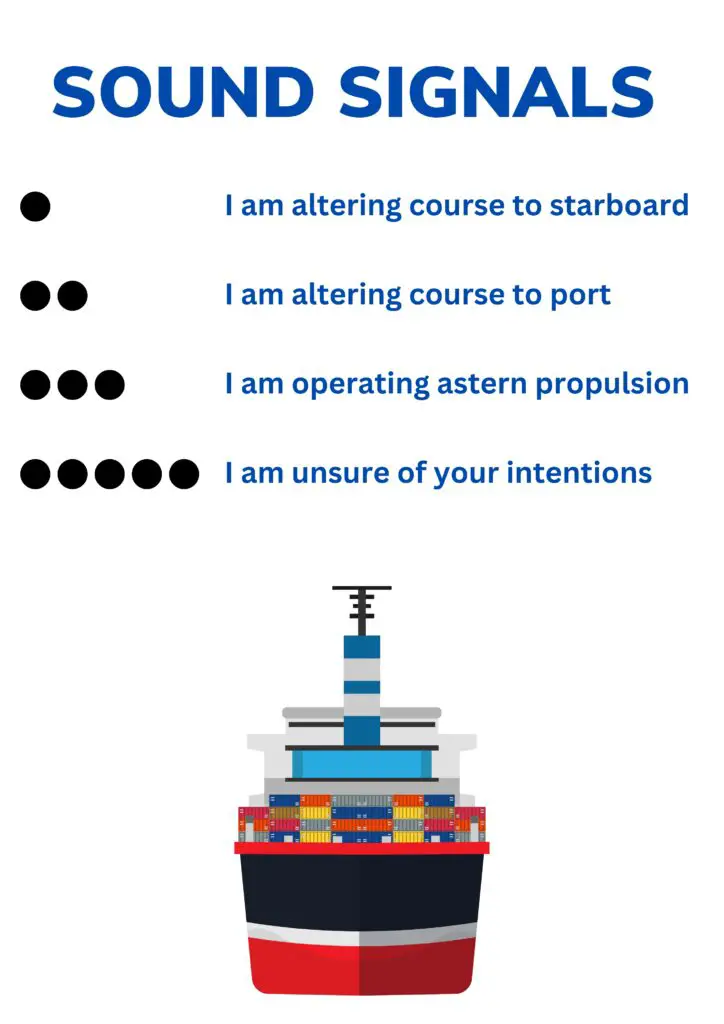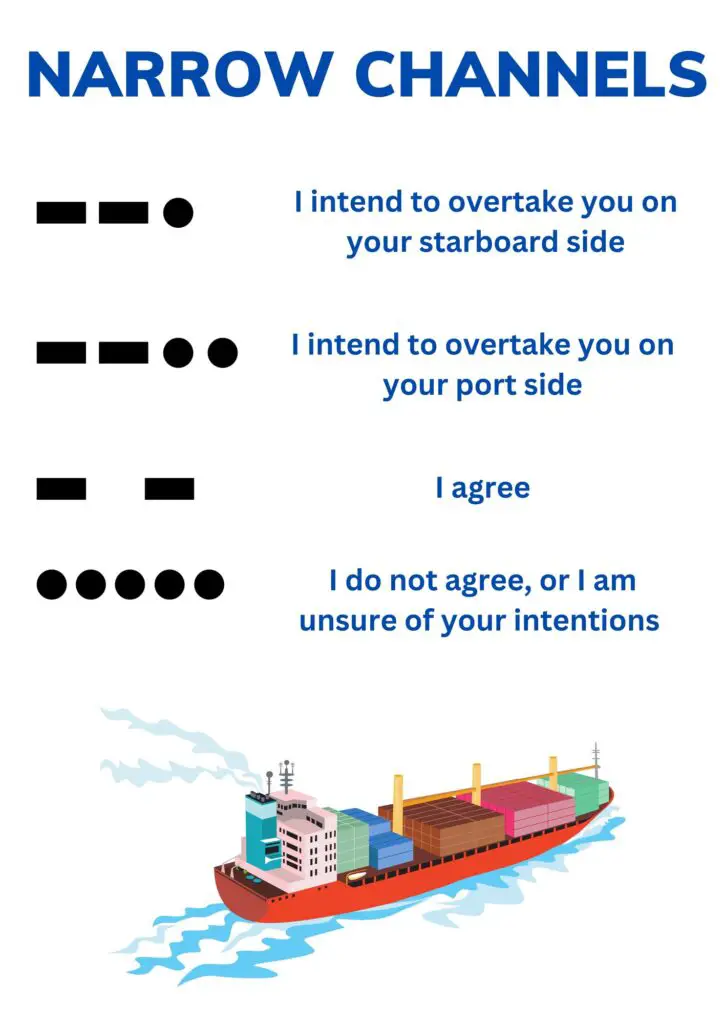Why Do Cargo Ships Blow Their Horns?
The sound of a ship’s whistle – the proper term for a ship’s horn – evokes a recognisable nautical sound. But, did you know that every sequence sounded on a ship’s whistle at sea has a distinct and important meaning?
The main reason that ships blow their horns is to communicate with other vessels. Sometimes they need to send a specific message, and at other times they simply need to communicate their presence. Either way, a ship’s whistle is primarily a communication device.
Each signal has its own unique meaning that is the same regardless of the type of ship. Whether a container ship, oil tanker, bulk carrier, or cruise ship, these signals all mean the same thing.
However, on a cruise ship, there are a number of reasons you might hear her sounding the whistle that you would not experience on a non-passenger vessel.
Why cruise ships are a little different
Everything that goes into the design of a cruise ship is done with the passenger experience in mind. Cruise ships will often sound their whistle as they pass a sister ship, or when leaving port. There is no legal or company obligation to do this, but it lets the passengers onboard know that they are passing another cruise ship and adds a little to the experience.
Cruise ships will sometimes sound their whistle while in port. This could be for one of three reasons: to test the whistle, to announce to passengers ashore that the ship is leaving soon and it’s time to get back onboard, or as a farewell signal to the port upon departure.
Disney ships even have customised whistles which can play famous tunes from Disney movies, such as When You Wish Upon A Star or the Imperial March from Star Wars.
There are over a dozen different combinations of signals that ships can sound on their whistles to communicate with other ships, and the majority of them are prescribed in the International Rules for Preventing Collisions at Sea, more commonly known as the COLREGS or the Rules of the Road.
Why do all ships have a whistle?
It is a requirement of the COLREGS that every merchant vessel over 12 metres in length has to have a whistle, and some even have two – one placed forward and one placed aft.
| Ship length | Minimum audible range of whistle |
|---|---|
| <20 metres | 0.5 miles |
| 20 – 74 metres | 1 miles |
| 75 – 199 metres | 1.5 miles |
| 200 metres + | 2 miles |
The COLREGS are a very important, but quite simple, set of rules that defines the responsibility and actions of each ship in a potential collision situation. It also prescribes a set of sound signals which are sounded on the ship’s whistle.
These signals inform other vessels in the area of a ship’s actions. At night, these whistle signals should also be supplemented by corresponding flashes on a special all-round white light with a minimum visible range of 5 miles.

These signals are the most commonly used and are vital to ships successfully understanding each other’s actions and intentions.
You may be wondering why ships don’t just talk to each other on the radio. To find out why this is a potentially dangerous mistake, check out our article: How Do Ships Talk To Each Other?
Sound signals in special circumstances
There are even more signals prescribed in the COLREGS that are only to be used in special circumstances.
A special set of sound signals is reserved for use by ships wishing to overtake in narrow channels.

When a ship sits at anchor, she is obliged to alert other ships to her presence using signals which cannot be mistaken for any other type of signal.
For this purpose, ships carry a bell and some even carry a gong.
If a vessel of less than 100 metres in length is at anchor, she is required to ring the ship’s bell for 5 seconds at least once every minute. For a vessel of over 100 metres, the bell signal must be followed by the ringing of a gong for 5 seconds.
If a ship has had the misfortune to run aground, she sounds the same signal as she would if she was at anchor, with a whistle signal sounded before and after her anchor signal.
This whistle signal is two short blasts followed by one long blast. In Morse code, this is the letter U, which means “you are running into danger”.
Did You Know: Many of the signals sounded by ships are letters in Morse code, and their use is based on their original meanings in Morse code
Fog signals
Probably the most well-known use for a ship’s whistle is fog signals. These have been used for collision avoidance for centuries, and while ships now have radar to make navigating in fog safer, fog signals are absolutely vital to helping ships stay a safe distance apart, even when they can’t see one another.

There are many different signals that vessels can sound in fog. These signals change depending on whether the vessel’s type, i.e. sailing vessels, fishing vessels, vessels aground, vessels at anchor, or vessels which have limited manoeuvrability will all sound different signals to a cargo ship.
The most common signal you may hear in fog, if you live near the sea, will be one prolonged blast, sounded at least every 2 minutes. This is the identification signal for a power-driven vessel underway in fog.
Emergency signals
One signal you will hopefully never hear except in a drill is the general emergency signal. This alarm is employed on every merchant ship in the world as the signal to proceed to muster stations and begin preparing to abandon ship.
The general emergency signal is seven short blasts followed by one prolonged blast on the ship’s whistle and alarm bells. This alarm is designed to be impossible to mistake for any of the other more common whistle signals that ships use.
It does not necessarily mean that the ship is going to be abandoned – just that everyone onboard needs to prepare for that possibility by taking warm clothing and their life jacket to their assigned muster station.
Anyone who has been on a cruise will recognise this signal, as a practice drill is done before the ship leaves port. Only after the Costa Concordia disaster was the law changed to require cruise ship passengers to complete a drill before the ship sails from port. Previously, the drill only had to be done within 24 hours of departure.
